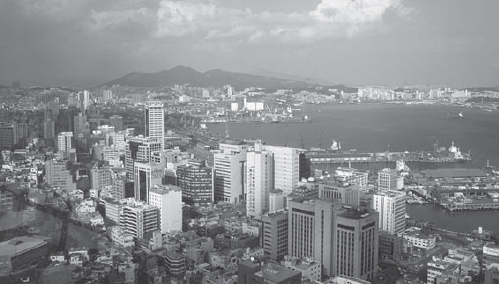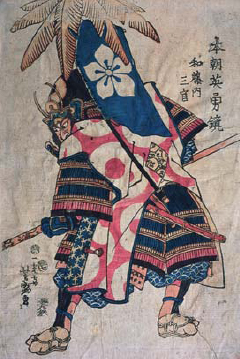
The samurai invasion of Korea was to have serious consequences for all three nations that took part in it, although on the Japanese side it was first hailed as a job well done. Okōchi Hidemoto provides the best example of the contemporary attitude to the Korean campaign when he concludes his Chōsen ki with a simple balance sheet. One hundred and sixty thousand Japanese troops had gone to Korea, where they had taken 185,738 Korean heads and 29,014 Chinese ones, a grand total of 214,752. The account had therefore ended in credit, in accordance with Hideyoshi’s wishes. In a similar vein runs the account of Motoyama Yasumasa, who, like Okōchi, refers to the enduring monument to Japanese savagery that is the Mimizuka in Kyoto. Unlike Okōchi, however, the Motoyama account does not fail to mention that many of the noses interred therein were not of fighting soldiers but ordinary civilians, because ‘Men and women, down to newborn infants, all were wiped out, none was left alive. Their noses were sliced off and pickled in salt.’
Of those who were not slaughtered, Keinen’s diary had recorded the sight of Korean captives being led away in chains and bamboo collars by Japanese slave traders. Between 50,000 and 60,000 captives are believed to have been transported to Japan. Most were simple peasants, but there were also some men of learning and numerous craftsmen including medicine makers and gold smelters, but particularly well represented were the potters. The Japanese enthusiasm for the tea ceremony had ensured that at least one aspect of Korean culture was respected when the country was invaded, and it would certainly have astounded some anonymous Korean potter to hear that a simple peasant’s rice bowl he had once made was doing service as a treasured and priceless tea vessel, handled by the greatest in the land. When the conquerors prepared to return home the opportunity to enrich their own pottery tradition at so little cost was too good to miss. The Shimazu brought 70 Koreans with them to Satsuma, including several potters who began ceramic production in three areas, and two centuries later visitors to Satsuma noted the distinctive Korean dress and language of the communities.

Pusan Harbour was the first place at which the Japanese landed and the final one from which the peninsula was evacuated in 1598.

Katō Kiyomasa is shown here in this dramatic print wearing a sashimono flag bearing his mon (crest).
The political fallout from the invasion of Korea was not be realized in Japan for several years to come, although the invading armies returned to find Japan under the nominal rule of Hideyoshi’s five-year-old son and on the brink of chaos. At the battle of Sekigahara in 1600 Tokugawa Ieyasu, the only prominent daimyō in Japan who had managed to avoid service in Korea, triumphed over a loose coalition to become shogun, a position his family was to occupy for the next two and a half centuries.
The war with Japan gravely weakened both Ming China and Korea, making the two countries easy prey for Nurhaci’s Manchu invaders. The Ming collapsed in 1644 as a result of internal rebellions and a fateful decision to invite Manchu troops into China to crush the insurrection. The Koreans were closely allied to the Ming dynasty that had helped them so much against the Japanese, and when the Manchus invaded China Korea stood fast to its loyalty. Despairing of ever persuading the Koreans to change their allegiance, the Manchu Emperor invaded Korea and forced the king to flee to Kanghwa Island. The Korean king then pledged allegiance, and the Manchus withdrew. Once safely back in Seoul, however, the king repudiated his promise and began preparing for war. In January 1636 the Manchus invaded again, crossing the frozen Yalu River with 100,000 men. Their advance was so rapid that Kaesŏng fell within five days. The king sent the royal family to Kanghwa Island, intending to follow himself, but the Manchus cut the road and forced the king to flee south to the mountain fortress of Namhansansŏng. The castle was surrounded, and after a 45-day siege and with starvation looming the king surrendered. On Kanghwa the women of the court threw themselves into the sea to avoid capture, and in a brave gesture a loyal retainer took the ruling family’s ancestral tablets into the pavilion over the south gate. Here he ignited a cache of gunpowder and blew everything to smithereens.
The Qing dynasty of China, created by the victorious Manchus, proved to be generous overlords and Korean independence was largely assured. For the next two centuries the ‘Hermit Kingdom’ of Korea stayed cut off from most of the known world, until the old regime was swept away with the coming of Europeans and the Sino-Japanese war at the end of the 19th century. During this conflict the modern Japanese army retraced many of the steps trodden by their ancestors, including a vicious battle for P’yŏngyang. The long Japanese occupation then stifled Korean aspirations towards self-government, even bringing about the re-writing of Korean history so that the samurai invasion of Korea became regarded as a heroic enterprise, rather than the savage act of aggression that it truly was.